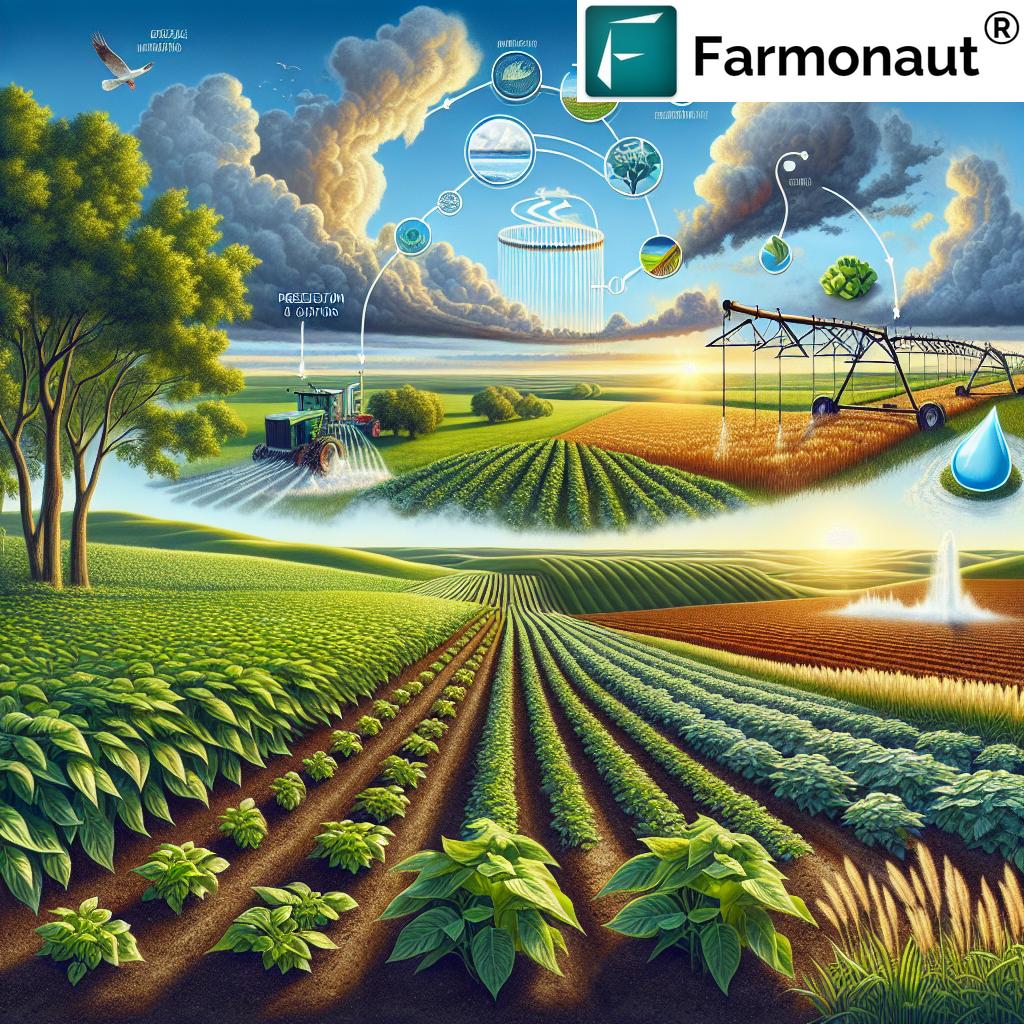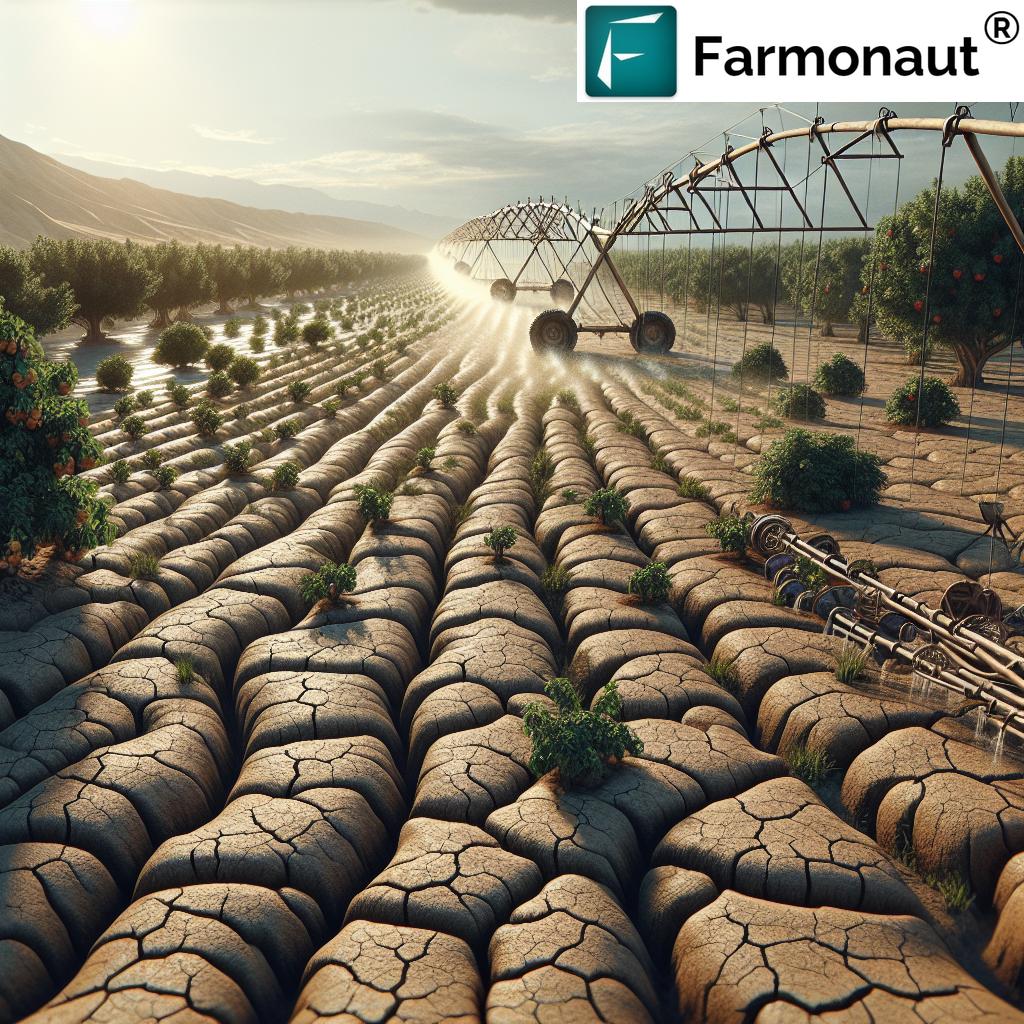USDA NRCS RIF Plan: 7 Ways to Boost Conservation
“USDA NRCS RIF Plan supports over 7 key strategies to enhance conservation on millions of U.S. agricultural acres annually.”
Introduction
The U.S. Department of Agriculture’s Natural Resources Conservation Service (NRCS) stands at the forefront of championing conservation, sustainable agriculture, and climate-smart land management practices across the nation. The introduction and implementation of the Inflation Reduction Act (IRA) in 2022 marked a turning point in American conservation history, representing the most significant federal investment ever in ecological stewardship, agricultural resilience, and the reduction of greenhouse gas emissions.
As conservation funding for agriculture ramps up under the USDA NRCS RIF Plan, new opportunities are unlocking for producers, landowners, and partners to advance climate-smart agriculture programs, deploy sustainable land management practices, and help ensure the health of our environment for generations to come.
Are you a developer or an agricultural business?
Integrate satellite-based crop monitoring and weather analytics with the Farmonaut API.
Access Farmonaut API |
View Developer Docs
Understanding the Inflation Reduction Act (IRA)
Enacted in 2022, the Inflation Reduction Act (IRA) stands as the largest commitment the federal government has made to date toward environmental conservation, agriculture, and climate change mitigation. By allocating substantial funding to USDA conservation programs, the IRA works to enhance environmental stewardship and support agricultural producers in adopting sustainable land management practices.
The bill provides more than $19.5 billion over five years, empowering the NRCS to deliver climate-smart agriculture programs that address urgent resource concerns and promote carbon sequestration practices. The focus lies not solely on greenhouse gas reduction in farming, but also on bolstering overall soil health, water quality, wetland restoration, and biodiversity.
NRCS’s Role in Implementing the IRA
The NRCS, a pivotal USDA department, is tasked with implementing the IRA and channeling funds into programs with measurable impact on climate-smart agriculture, forestry, and private lands conservation efforts. As the leading agency for conservation technical assistance, NRCS deploys resources that directly benefit farmers, ranchers, and forest landowners.
- Deploying climate-smart funding
- Enhancing environmental stewardship through targeted programs
- Supporting activities to reduce emissions and increase carbon sequestration
- Guiding partners and producers with expert, field-based assistance
The mission is clear: empower American agriculture and forestry with effective, science-backed solutions, and encourage the adoption of climate-smart management at scale.
“Climate-smart programs funded by USDA can reduce greenhouse gas emissions from agriculture by up to 20%.”
USDA NRCS RIF Plan: 7 Ways to Boost Conservation
The heart of the USDA NRCS RIF Plan is a focus on seven core strategies, each backed by significant federal investment and designed to mitigate climate change, enhance conservation outcomes, and promote sustainable land management practices on agricultural and forested lands nationwide.
1. Environmental Quality Incentives Program (EQIP)
EQIP receives $8.45 billion over five years and is central to incentivizing sustainable resource management among America’s producers. This program offers financial and technical assistance for installing conservation practices that address soil erosion, water quality, habitat protection, and greenhouse gas reduction in farming. Typical activities covered include:
- Cover cropping
- Conservation tillage
- Irrigation efficiency improvements
- Prescribed grazing and nutrient management
- Wetland restoration initiatives
By targeting these resource concerns, EQIP not only improves productivity but also actively contributes to sustainable land management practices and climate mitigation.
Learn more about EQIP from NRCS.
2. Regional Conservation Partnership Program (RCPP)
With a $4.95 billion allocation, RCPP is built on partnership and collaboration. The aim is to deliver tailored, local conservation solutions by joining forces with state agencies, NGOs, and private sector entities. This approach ensures that resource concerns and opportunities unique to specific communities and regions are addressed through innovative collaborations.
- Large-scale watershed projects
- Collaborative efforts to improve wildlife habitat and soil quality
- Water resource management aligned with local needs
RCPP is critical in pioneering conservation initiatives with community-wide and long-term benefits.
See how RCPP supports local conservation partnerships.
3. Conservation Stewardship Program (CSP)
At $3.25 billion, CSP encourages producers to maintain and enhance existing conservation practices while adopting new ones for greater impact. The program focuses on continuous improvement:
- Building upon soil health improvements
- Integrating advanced water conservation and pest management approaches
- Supporting organic transition and wildlife habitat development
This ensures lasting stewardship and climate adaptability.
Discover CSP’s support for long-term conservation.
4. Agricultural Conservation Easement Program (ACEP)
ACEP allocates over $1.4 billion to protect agricultural lands and wetlands through easements, ensuring their long-term conservation. Landowners can voluntarily enroll their property, safeguarding working farms, grasslands, and vital wetland ecosystems from future development.
- Conservation easement benefits: Perpetually protects land for agriculture, habitat, water filtration, and flood control
- Keeps working lands productive and resilient
- Promotes biodiversity and safeguards critical environmental resources
Learn about ACEP and conservation easement opportunities.
5. Conservation Technical Assistance
A robust $1 billion goes to technical assistance for conservation. Through this program, producers and landowners gain expert guidance, conservation planning, and support on implementing effective strategies—from establishing carbon sequestration practices to deploying cover crops, buffer strips, and wetland restoration initiatives.
- Individualized conservation plans
- Hands-on workshops and field days
- Digital tools for monitoring outcomes
The goal: remove the barriers to on-farm adoption and amplify the impact of every conservation dollar spent.
6. Greenhouse Gas Quantification Initiative
The Greenhouse Gas Quantification initiative is a $300 million investment to scientifically measure the reduction of emissions and increases in carbon sequestration resulting from conservation programs. This:
- Empowers data-driven policy and program improvement
- Validates the climate-smart impacts of conservation investments
- Supports “climate-smart” certifications for participating producers and partners
7. Wetland Restoration, Forestland Assistance, and Innovative Practices
Additional programs fund wetland restoration initiatives, agroforestry, and innovative conservation practices that address emerging resource concerns. These efforts:
- Bolster carbon sequestration
- Provide habitat for wildlife
- Enhance water quality and retention
Conservation Funding for Agriculture: Fiscal Year 2025 & Priorities
For fiscal year 2025, NRCS will direct up to $7.7 billion towards the implementation and enhancement of conservation activities, climate-smart mitigation, and sustainable land management practices. Notable allocations include:
- $2.8 billion for EQIP
- $1.4 billion for RCPP
- $943 million for CSP
These funds will expand access to conservation assistance, support climate-smart mitigation activities, and drive innovation across American agricultural and forest lands. With a growing emphasis on measurable outcomes, the department is aligning priorities with environmental, agricultural, and community needs.
Explore this fiscal year’s climate-smart funding announcement.
Climate-Smart Agriculture and Forestry Mitigation Activities
The NRCS supports a broad suite of climate-smart practices recognized under the IRA for their ability to reduce emissions, increase carbon sequestration, and improve ecosystem health. These include:
- Cover cropping — Enhances soil structure, increases carbon storage, and prevents erosion.
- Conservation tillage — Reduces soil disturbance, preserves moisture, and locks in soil carbon.
- Wetland restoration initiatives — Revives natural water filters, boosts biodiversity, and adds resilience against flooding.
- Prescribed grazing, rotational grazing, and range management
- Advanced nutrient management — Curtails nitrogen runoff and mitigates nitrate pollution.
- Tree planting, agroforestry, and forest stand improvement
- Restoration of grasslands and wildlife habitats
As a result, producers and landowners are empowered to implement impactful activities that deliver on climate, environmental, and productivity goals alike.
Did you know?
Effective carbon tracking tools are vital for sustainable agriculture.
Discover Farmonaut’s Carbon Footprinting platform for real-time agricultural emissions monitoring and actionable sustainability insights!
Impact on Private Lands Conservation Efforts
The impact of the IRA and RIF Plan is unmistakable. In fiscal year 2024 alone, over 23,000 climate-focused conservation contracts funded by the IRA were executed, covering more than 11 million acres of private land—a historic milestone for private lands conservation efforts.
- The most extensive single-year conservation investment in USDA history
- Unprecedented support for American farmers, ranchers, and forest owners in reducing greenhouse gas emissions
- Meaningful improvements in soil health, water quality, and climate resilience
This trend underscores the effectiveness and necessity of sustained conservation funding for agriculture and motivates further investment in sustainable agriculture across the United States.
Read the official record on USDA’s Private Lands Conservation investment.
Enhancing Conservation with Farmonaut’s Technology
While government-led programs set the stage for widespread adoption of sustainable agriculture and forestry practices, advanced agricultural technologies like those developed by Farmonaut are key enablers for producers, landowners, and organizations seeking scalable, data-driven solutions.
At Farmonaut, we are dedicated to empowering stakeholders with satellite-based crop health monitoring, AI-based farm advisory, resource management, carbon footprinting, and blockchain-based traceability solutions. Our platform supports the goals of the NRCS RIF Plan by helping the agriculture sector:
- Monitor vegetation health and soil moisture to inform precision farming
- Reduce wastage of inputs like water and fertilizers
- Track carbon emissions and optimize sustainability
- Verify and document sustainable land management practices for certification and market access
- Ensure compliance, transparency, and resource optimization from small to large-scale farms
If you’re interested in managing multiple farms, monitoring plantations or forests, or require advanced satellite analytics, visit our Large Scale Farm Management solution page for full details.
For real-time crop loan and insurance verification using remote sensing, check out our satellite-based crop loan & insurance platform.
Need to enhance your supply chain transparency? Our Traceability solution leverages blockchain for unparalleled transparency from farm to fork.
For organizations managing farm fleets or agricultural machinery, see Farmonaut Fleet and Resource Management for real-time tracking and optimization.
Whether your goal is carbon monitoring, sustainable yields, or advanced digital agriculture, Farmonaut’s mobile app, web platform, and API offer robust, scalable tools for all stakeholders in the food and fiber value chain.
Streamlining and Expanding Conservation Programs
The NRCS continues to refine flagship programs such as RCPP and ACEP by:
- Simplifying application and reporting processes for producers and partners
- Reducing administrative burdens and paperwork
- Enhancing flexibility to accommodate a diversity of local needs and priorities
These initiatives ensure conservation investments are more accessible, impactful, and can be scaled swiftly to accelerate adoption of climate-smart agriculture programs and deliver real outcomes for environmental stewardship.
Read more on NRCS program improvements.
Workforce Optimization and Office Consolidation
To efficiently administer the expanded portfolio of programs and resources under the IRA, the NRCS is optimizing its workforce and realigning its service delivery:
- Relocating staff closer to agricultural producers and their communities
- Reducing the agency’s footprint in metropolitan or non-agricultural areas
- Streamlined office presence to improve efficiency and responsiveness
This approach is expected to maximize the value of federal conservation investments while delivering better service at the local level.
See the latest on NRCS workforce plans.
Summary Comparison Table of RIF Conservation Practices and Estimated Impacts
| Practice / Funding Opportunity | Description | Funding Allocation (%) | GHG Reduction (est. CO₂e/year) | Anticipated Environmental Benefits |
|---|---|---|---|---|
| Environmental Quality Incentives Program (EQIP) | Financial and technical assistance for cover cropping, tillage, irrigation, grazing, nutrient management, wetland restoration, and more. | ~40% | Up to 8M MT CO₂e | Soil health, water quality, erosion control, carbon sequestration, increased biodiversity. |
| Regional Conservation Partnership Program (RCPP) | Collaborative projects tailored to local/regional concerns—watershed health, wildlife habitat, community-driven initiatives. | ~23% | 3-5M MT CO₂e | Watershed resilience, habitat restoration, localized resource focus. |
| Conservation Stewardship Program (CSP) | Encourages continual improvement; rewards maintenance/enhancement of conservation practices. | ~16% | 2-4M MT CO₂e | Long-term soil fertility, water retention, pest control, biodiversity. |
| Agricultural Conservation Easement Program (ACEP) | Permanent or long-term easements on agricultural lands and wetlands for conservation. | ~7% | 1.5M MT CO₂e | Wetland restoration, flood mitigation, water filtration, wildlife corridors. |
| Conservation Technical Assistance | Expert planning, tailored guidance, digital tools, workshops, and support for effective on-farm conservation adoption. | ~5% | Indeterminate; supports all activities | Enhanced efficiency, knowledge transfer, increased adoption rates. |
| Greenhouse Gas Quantification Initiative | Data collection, modeling, and reporting to measure emissions reduction and carbon sequestration impacts across programs. | ~1.5% | Objective, science-backed accounting | Policy calibration, transparency, certification readiness. |
| Wetland, Forestland, & Innovative Practices | Projects focused on wetlands, forests, and emerging approaches addressing regional resource concerns. | ~7.5% | 1.5-2M MT CO₂e | Water retention, flood control, carbon storage, wildlife conservation. |
Frequently Asked Questions (FAQ) about the USDA NRCS RIF Plan & Conservation Funding for Agriculture
- What is the Inflation Reduction Act and how does it impact agriculture?
- The Inflation Reduction Act (IRA) is a historic piece of federal legislation enacted in 2022 that allocates significant funding to USDA conservation programs. Its impact on agriculture includes direct incentives for producers to adopt climate-smart practices, substantial investments in reducing greenhouse gas emissions, and support for sustainable land management practices.
- How do NRCS programs like EQIP and CSP support producers and landowners?
- EQIP provides financial and technical assistance for those implementing conservation practices like cover cropping and irrigation improvements. CSP encourages continued stewardship and rewards enhancement of existing conservation measures, helping both new and established producers.
- What are conservation easements and what are their benefits?
- Conservation easements are voluntary, often long-term agreements that preserve private agricultural land and wetlands by removing rights for development. Benefits include soil and water conservation, flood mitigation, enhanced habitat, and guaranteed land availability for future farming generations.
- How do climate-smart agriculture programs reduce emissions?
- Such programs fund activities like cover cropping, reduced tillage, wetland restoration, and advanced nutrient management. These not only improve soil health and productivity but also have a measurable impact on reducing greenhouse gas emissions across agricultural and forested lands.
- Can I use technology to help implement and track conservation improvements?
- Yes. Satellite-based platforms like Farmonaut offer tools for crop health monitoring, carbon footprinting, resource management, and traceability—all useful for maximizing the impact of conservation investments and verifying outcomes.
- What funding amounts are available and how can producers apply?
- Funding varies by program (see table above), with billions allocated annually. Producers can apply through their local NRCS office or online through the USDA NRCS website. Technical assistance is available to guide applicants through planning and documentation.
- Are conservation programs only for large farms?
- No. Conservation programs managed by NRCS are available to farms and forest lands of all sizes. Whether you operate a small family farm or a large agribusiness, incentives and technical support are structured for broad participation.
Conclusion: Building a Sustainable Future Through Conservation Funding for Agriculture
The integration of USDA NRCS RIF Plan with bold federal investment signals a transformative era for conservation funding in agriculture. The Inflation Reduction Act not only recognizes but elevates the role of farmers, ranchers, and forest landowners in achieving climate-smart land management practices and environmental stewardship on a national scale.
By deploying a multifaceted suite of programs—EQIP, RCPP, CSP, ACEP, Conservation Technical Assistance, Greenhouse Gas Quantification, and Wetland/Forest Initiatives—the USDA’s NRCS is promoting sustainable agriculture, reducing greenhouse gas emissions, and bolstering resource resilience for today and tomorrow.
In parallel, innovative technologies, such as those provided by Farmonaut, create powerful pathways to action and accountability at the farm, community, and enterprise scale. Together, public investment and advanced technology are shaping a more sustainable, productive, and resilient agricultural landscape across the United States.
Take the next step with Farmonaut:
Sign up for affordable, precision agriculture subscriptions below, explore our web and mobile apps, or integrate our API to maximize your conservation impact and farm productivity, while helping realize the promise of sustainable land management programs for future generations!






















